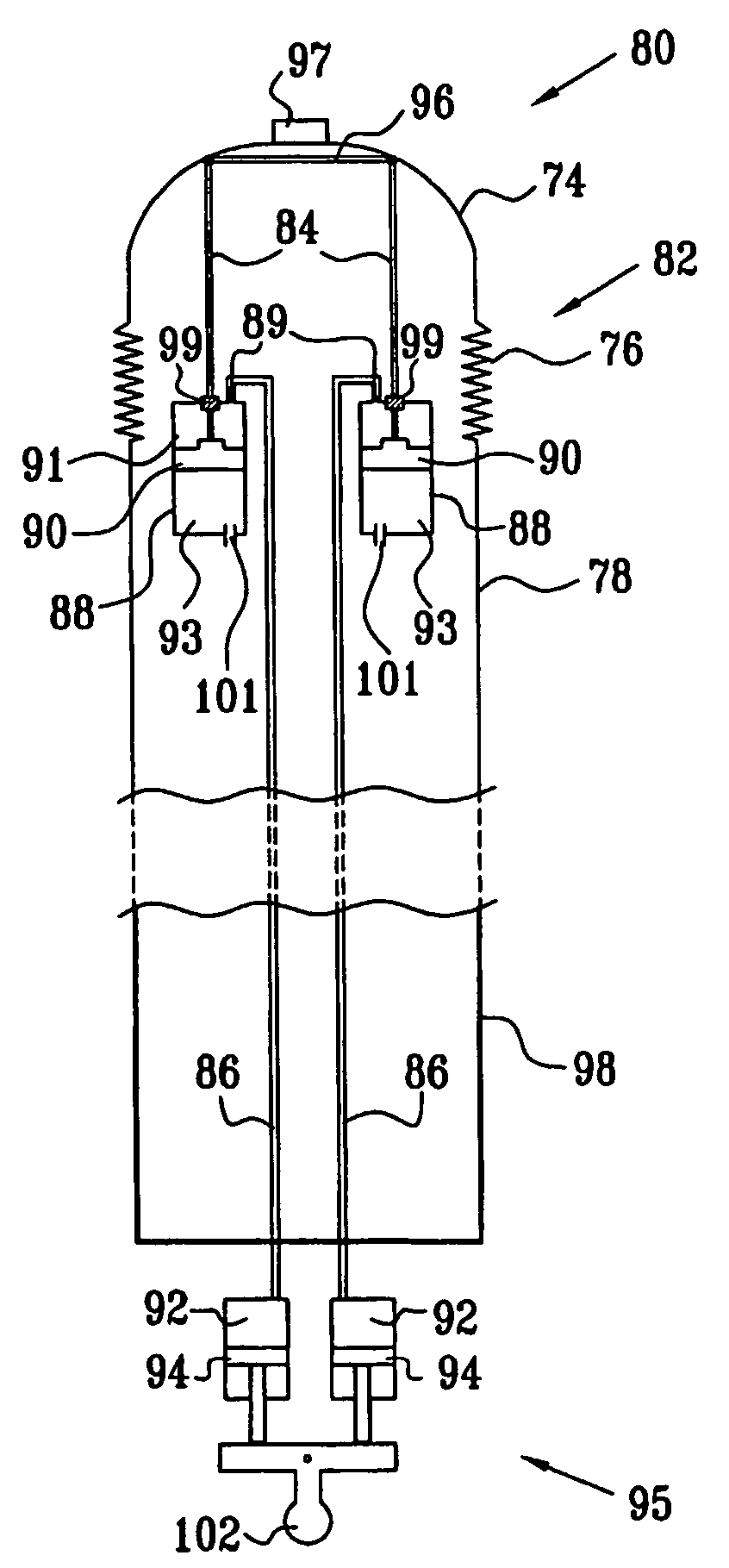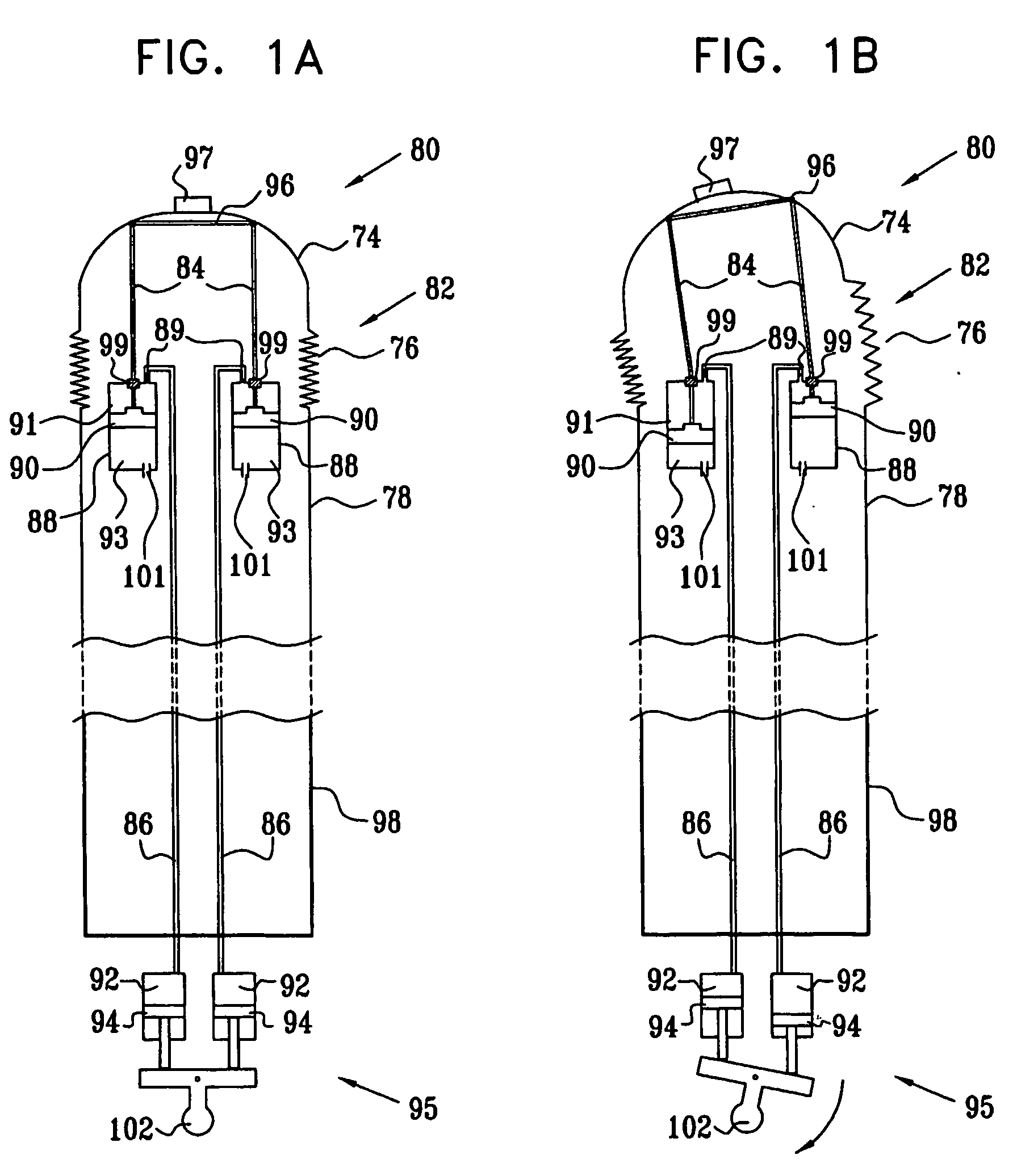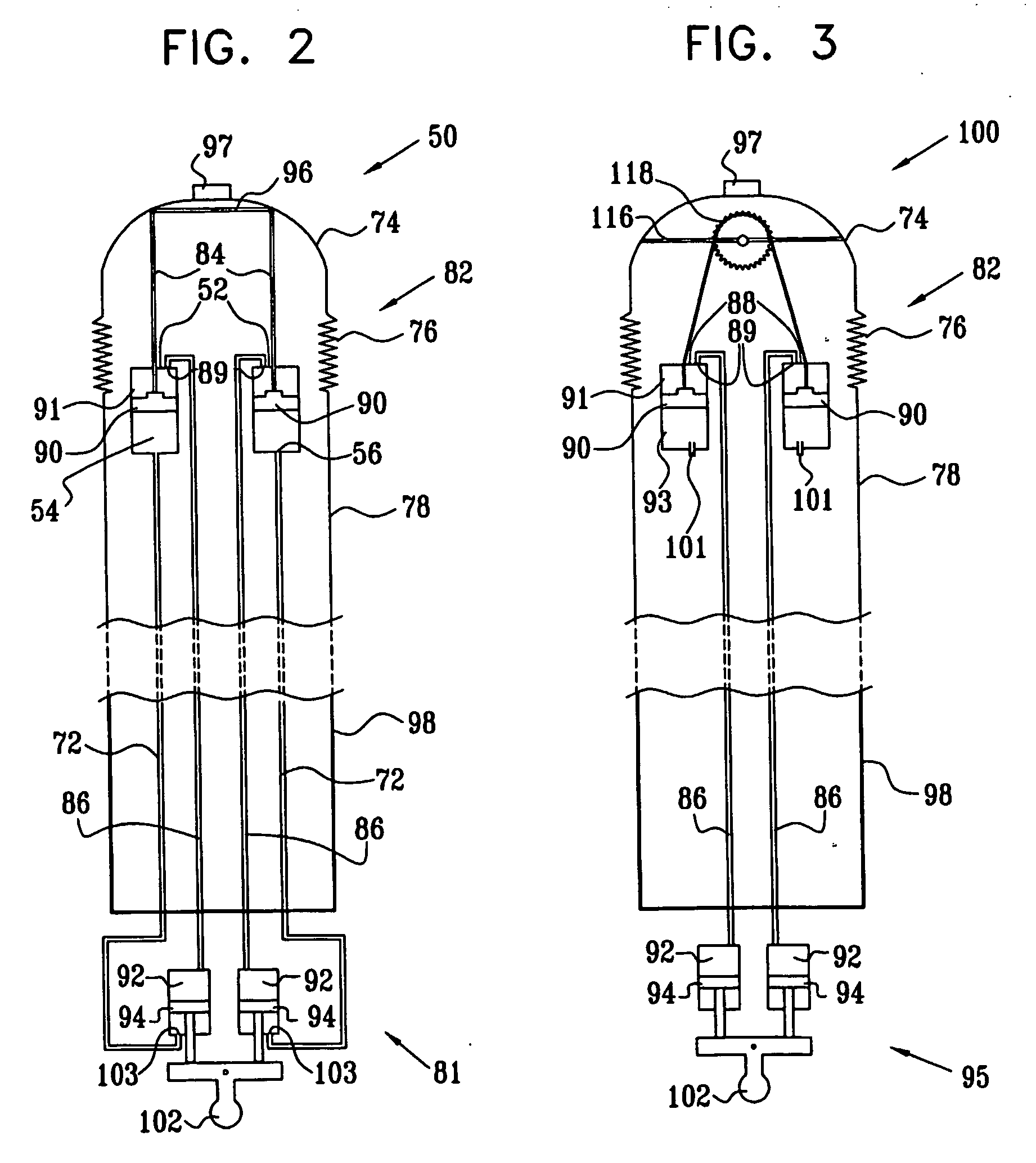Piston-actuated endoscopic steering system
- Summary
- Abstract
- Description
- Claims
- Application Information
AI Technical Summary
Benefits of technology
Problems solved by technology
Method used
Image
Examples
Embodiment Construction
[0080] Reference is now made to FIGS. 1A and 1B, which are schematic sectional drawings of a flexible endoscope 80 comprising a hydraulic steering mechanism, in accordance with a preferred embodiment of the present invention. The endoscope is shown in a first, straight, state (FIG. 1A), as well as in a second state (FIG. 1B) during steering of the endoscope. Endoscope 80 comprises a distal portion 82, which is advanced into the gastrointestinal tract of a patient, and a proximal portion 98, part of which remains external to the patient and is accessible to the operator of the endoscope. Typically, a probe 97 is disposed near the tip of endocope 80, for diagnosis and / or treatment of the patient. In a preferred embodiment, probe 97 comprises a camera for examining the interior of the gastrointestinal tract. Alternatively or additionally, probe 97 comprises a tool, such as a biopsy device or a treatment device.
[0081] Distal portion 82 preferably comprises a forward section 74 coupled ...
PUM
 Login to View More
Login to View More Abstract
Description
Claims
Application Information
 Login to View More
Login to View More - R&D
- Intellectual Property
- Life Sciences
- Materials
- Tech Scout
- Unparalleled Data Quality
- Higher Quality Content
- 60% Fewer Hallucinations
Browse by: Latest US Patents, China's latest patents, Technical Efficacy Thesaurus, Application Domain, Technology Topic, Popular Technical Reports.
© 2025 PatSnap. All rights reserved.Legal|Privacy policy|Modern Slavery Act Transparency Statement|Sitemap|About US| Contact US: help@patsnap.com



